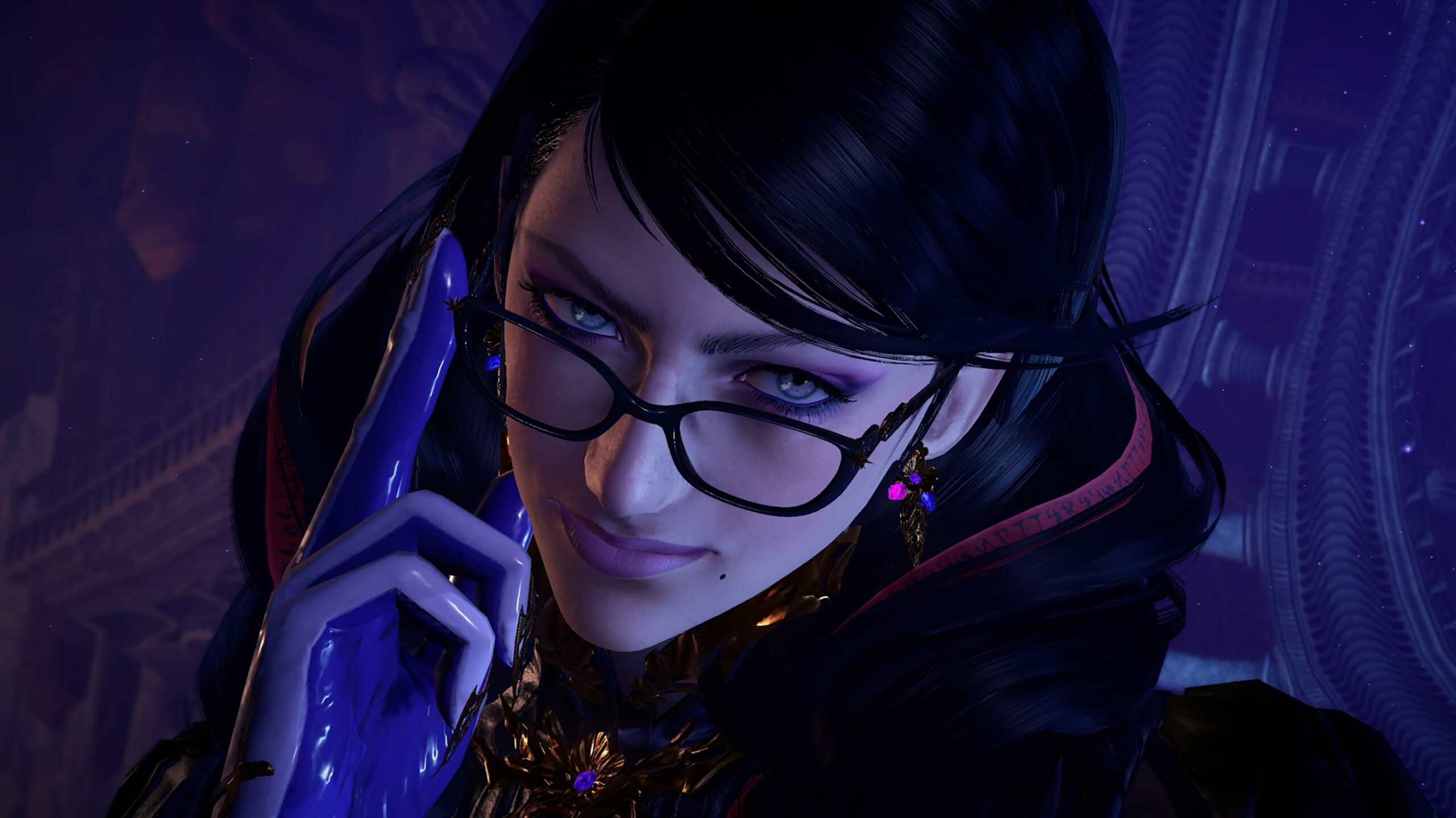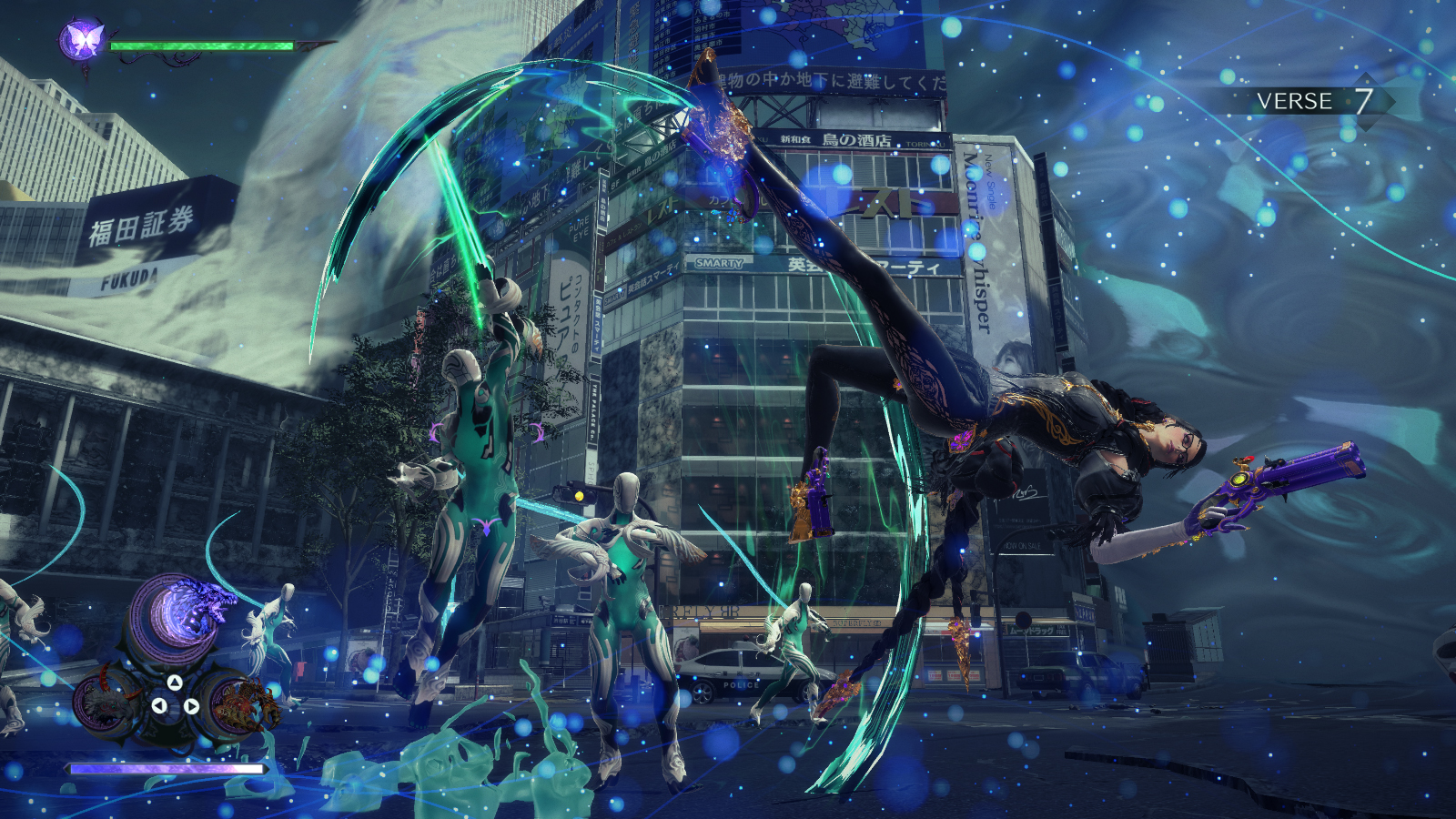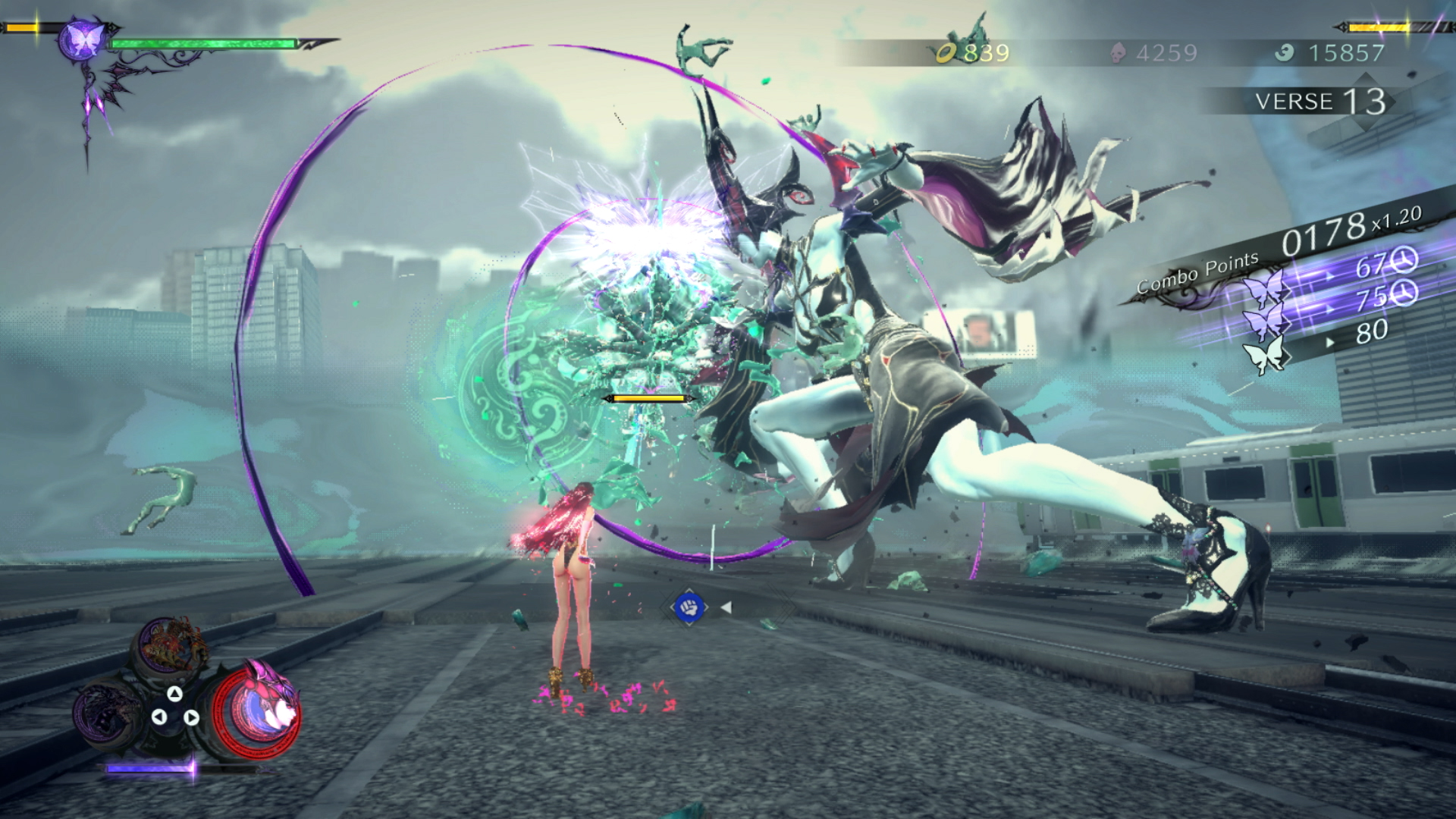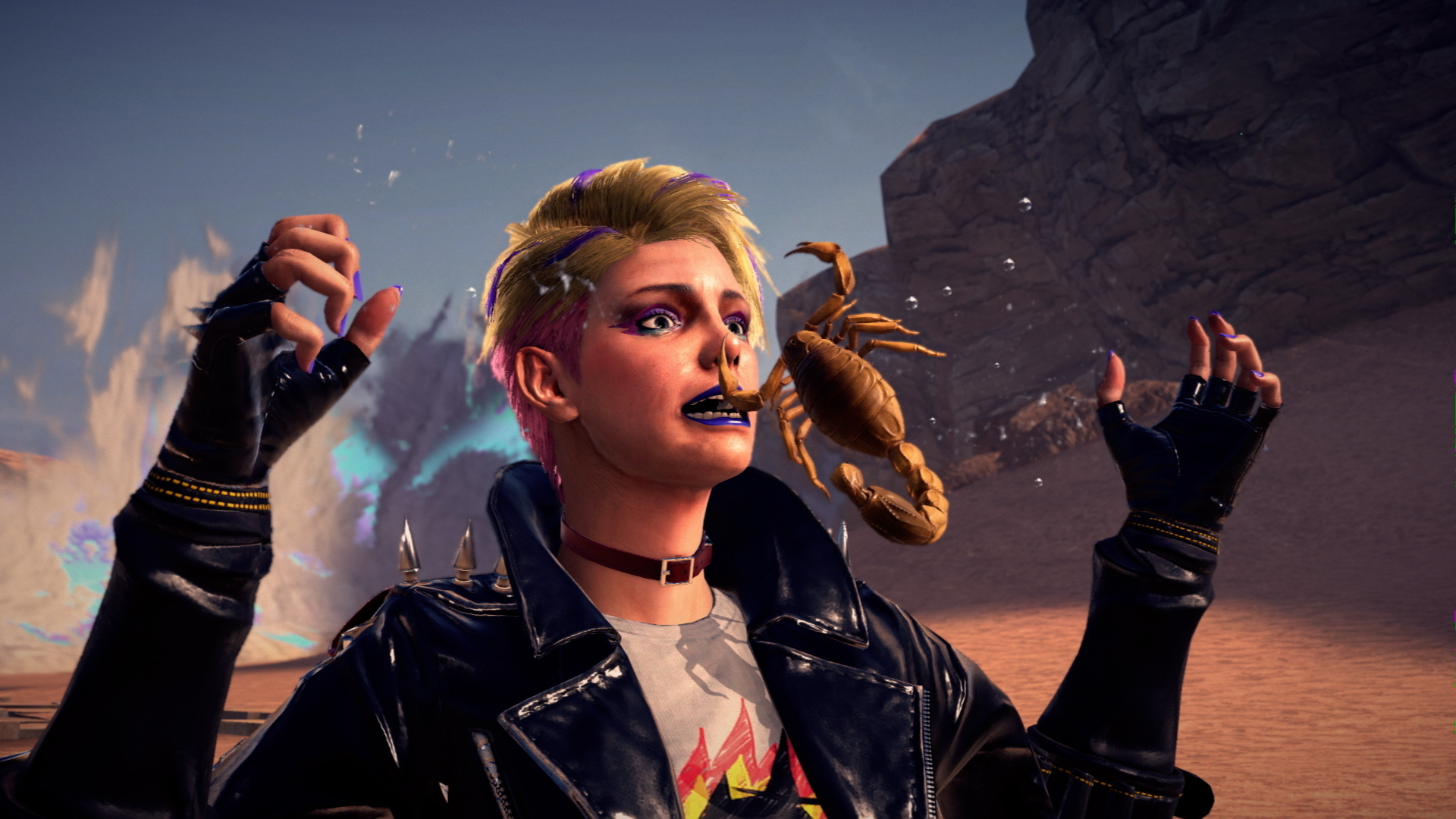
Within the first hour of Bayonetta 3, I was riding atop a giant dragon, zipping down hellspawn-infested New York highways using boats as surfboards and swinging my hips without a care in the world.
This level of delightfully batshit energy defines Platinum Games’ Bayonetta series, and it’s at its absolute best in the threequel. In the day and age of bloat — when so many games seemingly must be dozens of hours long, open-world and/or grindy live services — the tight, linear and oh-so-stylish Bayonetta experience feels even more standout.
That all starts with our heroine. The controversy surrounding original Bayonetta actress Hellena Taylor aside, Canadian voice acting veteran Jennifer Hale is splendid in the role, fervently delivering her lines with the character’s ever-endearing sultriness. Honestly, Bayonetta’s devil-may-care attitude, unrelenting confidence, and propensity to just break out in dance continue to be such a refreshing departure from what we’ve traditionally come to expect from a “badass” video game character.
All the while, we get to see other sides of Bayonetta, as her journey this time around — travelling across the multiverse to stop a mysterious threat known as the Singularity — brings her into contact with different versions of herself, including a Cleopatra-esque Egyptian variant. That said, while Bayonetta 3 can largely be enjoyed without prior knowledge of the series, you’ll certainly appreciate the multiverse angle more if you’re familiar with the characters. On the flip side, the narrative twists and turns of Bayonetta 3 have already proven to be controversial for some diehard fans, so you might even be better off coming in without any such attachment.

Witch Time remains so satisfying to pull off.
In any case, this didn’t bother me because I don’t go into Bayonetta for the story, but rather, the aforementioned moment-to-moment insanity. At the heart of that is Bayonetta‘s top-notch combat, which Platinum has refined and iterated upon in a number of brilliant ways. Bayonetta’s melee attacks and handguns remain your bread and butter, while the Witch Time mechanic — a brief slow-mo period enabled by perfectly timed dodges — is just as rewarding to pull off as ever. The wide variety of delectably over-the-top weapons, ranging from a massive rocket launcher made out of a demon’s tissue to mini chainsaw-equipped trains and a weaponized microphone stand that’s literally called ‘Ribbit Libido,’ ensures that there’s never a dull moment in combat.
But the biggest addition this time around is the Demon Slave mechanic, which lets Bayonetta command massive creatures that are, naturally, made out of her own hair. In previous games, these beasts were relegated to button-mashing finishing moves, but now, you get full control of them. There’s something viscerally satisfying about having these giant, almost Kaiju-esque monstrosities crush enemies both big and small, while Bayonetta herself grooves left and right like she’s in a Zumba class in Hell. At the same time, there’s a balanced risk-reward dynamic to Demon Slaves, as you relinquish control of Bayonetta herself while piloting them, leaving her open to attacks. Some enemies can even one-shot your Demons, which will lock your summoning ability for a while. All of these mechanics come together to deliver the rare combat system that is easy to pick up and play but also deceptively deep — a potent mix of both style and substance.

The Demon Slave mechanic is also quite cheeky.
Further diversifying the moment-to-moment gameplay is the addition of Viola, a witch-in-training who’s also a new playable character. Her punk rock attire and gruff attitude provide a charming foil to the more experienced and self-assured Bayonetta, making their interactions a particular highlight. But beyond that, Viola just has an enjoyably different feel in combat. Her fighting style is centred around the katana, and instead of dodging to activate Witch Time, she needs to time her parries. In a way, it’s reminiscent of how Raiden plays in Platinum’s excellent Metal Gear Rising: Revengeance, and it’s just a fun change of pace from using Bayonetta. The giant Cheshire cat Viola can summon also operates on its own, unlike the Demon Slaves, which graciously frees you up for more slicing and dicing.
Less successful in adding gameplay variety are the levels featuring fan-favourite Jeanne, Bayonetta’s best friend and rival. These play out as Mark of the Ninja-like 2D stealth missions, which might sound cool, but they never really get more interesting than running from Point A to Point B. Platinum definitely deserves some credit for trying something decidedly different, but the execution, unfortunately, just falls flat. Thankfully, these are skippable side chapters, although they do offer some narrative context regarding Jeanne’s search for the doctor key to stopping the Singularity.

The rough-around-the-edges is the perfect foil for Bayonetta.
But while you can avoid Jeanne’s lacklustre sections, you won’t have such luck with Bayonetta 3‘s greatest shortcoming: the Switch itself. Unfortunately, Platinum’s wonderfully inspired character, monster and setpiece designs are somewhat held back by muddy textures and bland environments. Bayonetta 3 also struggles to maintain 60fps at times, and it’s not uncommon for some of the grander action sequences to chug. None of this is game-breaking, but it’s nonetheless a blemish on an otherwise exceptionally well-crafted experience.
Frankly, though, it’s a miracle we even get games like Bayonetta 3, especially published by the maker of family-friendly games like Mario. Even nearly 15 years after its debut, Bayonetta remains fresher than ever thanks to an unparalleled sense of style and identity and masterful, gratifying combat. Some less-than-stellar gameplay additions and technical issues aside, Bayonetta 3 is an absolute gem, and a fine addition to the Switch’s ever-impressive catalogue.
Bayonetta 3 is now available on the Nintendo Switch.
Image credit: Nintendo
MobileSyrup may earn a commission from purchases made via our links, which helps fund the journalism we provide free on our website. These links do not influence our editorial content. Support us here.


